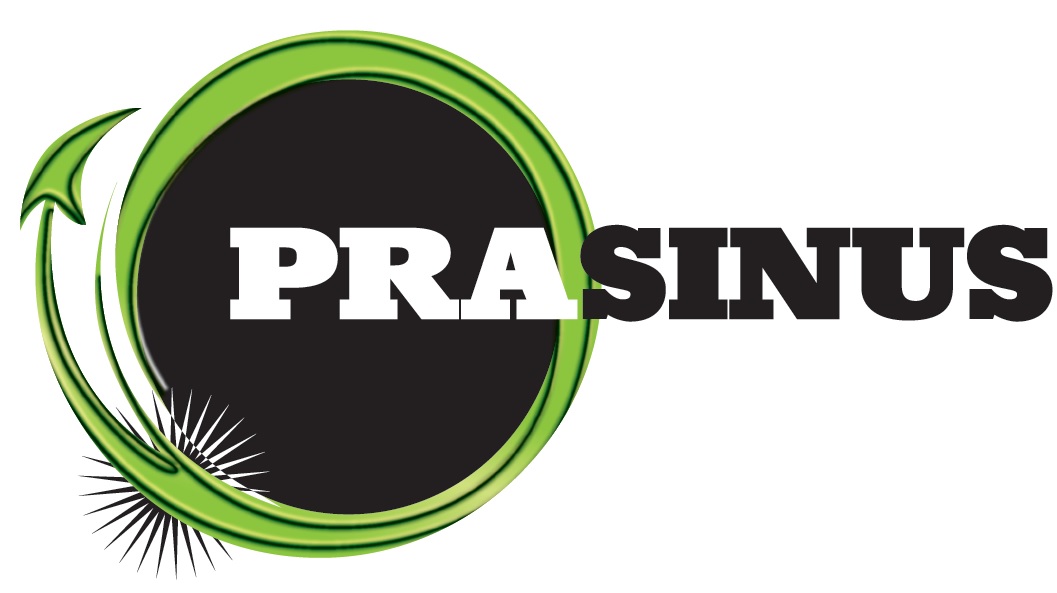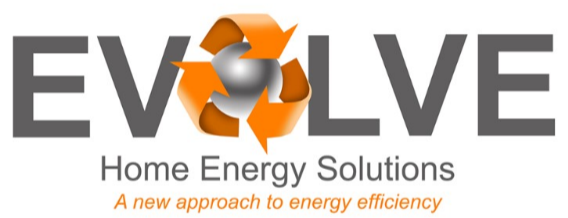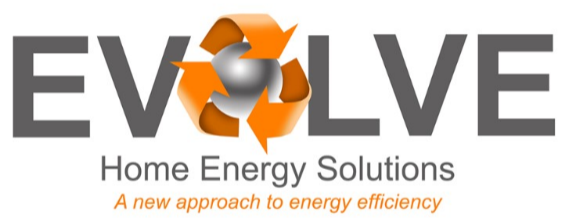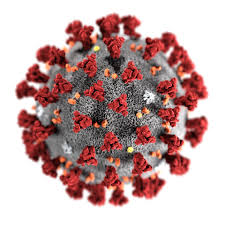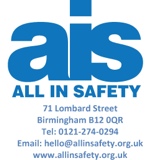Title Page
-
Project Number
-
Location
-
Network
-
Feeder number
-
Conducted on
Task
-
Task Description
-
Is the task Rail work related?
-
'All works are to comply with the VicTrack Network Protection Plan TS-SP-015'
-
PPE to be Utilised
- Uniform
- Footwear
- High Vis
- Rail High Vis (orange)
- Eyewear
- Fall Arrest
- Gloves
- Hearing
- Dust Mask
- Hard Hat
- Other
-
List other PPE required
-
Prepared by
1. HRCW on or adjacent to roadways or railways used by road or rail traffic
1. HRCW on or adjacent to roadways or railways used by road or rail traffic
-
Working adjacent to road or rail in the vicinity of traffic
- Applicable
- Not Applicable, working off road
Hazard/Risks
-
Vehicle / Rail Traffic / mobile plant movement
- Implement site traffic management plan (TMP) prior to undertaking works. (Per.Traffic field guide rural/urban)
- Revised speed limit
-
VERIFICATION - TMP no:
-
VERIFICATION - Worksite compliant with TMP
Hazard/Risks
-
Personnel, contractors & the general public being struck by vehicles
- Warning lights on mobile plant
- Evacuation area away from carriage way
- Sound the horn to alert persons in the vicinity of the impending movement of a vehicle
- Vehicle 360 degree check of surroundings
-
VERIFICATION - Warning lights on all plant/vehicles
-
VERIFICATION - Where is the nominated evacuation location/area
-
Plant and Equipment being struck by vehicles
- Discuss and document works to be completed and works method
- Spotters must be assigned for vehicle movement where practicable
-
Fires (grass)
- Be aware of vehicle exhaust “burn off” level (if fitted) before entering dry or long grass.
- Fire mitigation equipment
-
Members of the public or animals distracting and or threatening Prasinus personnel’s safety
- Remain in vehicle until Animal/Public have left the job site request for assistance from PES Supervisor personnel and or Police
- Use care when driving on private property – seek appropriate authority/ permission as required
- Not Applicable
-
Uneven/slippery ground or surfaces causing slip, trip, fall hazards
- Where practicable keep to firm level ground
- Ensure correct PPE footwear is worn
-
Environmental Damage
- Off road conditions – avoid unnecessary damage to native flora and fauna and use care and check route for hidden obstacles eg tree Stumps, holes, fence wire etc and/or off-road conditions
- Not Applicable
-
Are there other hazards present?
Other Hazards
-
Additional Hazards / Risks:
-
Additional controls and implementation:
-
Photos
2. HRCW at workplaces where there is any movement of powered mobile plant
2. HRCW at workplaces where there is any movement of powered mobile plant
-
Plant set up and operation
-
Select all that apply:
- EWP - Insulated
- EWP - Uninsulated
- Peru
- Crane
- Excavator
- Rock Drill
- NDD
- Other
-
List other plant
Hazard/Risks
-
Plant and equipment failure
- Complete crane checklist (where applicable)
- Pre-start checks Checklist/logbook, crane checklist performed on all plant onsite (by authorised plant operator).
- Spill kit
-
VERIFICATION - Plant pre-start completed
-
VERIFICATION - Logbook Completed
-
VERIFICATION - Crane checklist completed
-
• Electrical shock from plant • Flash over between mobile plant
- Earth plant using priority earthing system (PER Green book P2. 2.1.4)
- De-energize all assets when using uninsulated EWP
- Refer Section 5 HRCW on or near energised electrical installations or services
- Not Applicable
-
VERIFICATION - Earth required
- Pole earth
- Guy rod / Earth pin
- Earth chain
-
VERIFICATION - Permit #
-
Personnel struck by plant
- Safety Observer/Spotter assigned for vehicle movement where practicable
- Sound the horn to alert persons in the vicinity of the impending movements of a vehicle
- Vehicle 360 degree check of surroundings
-
Vehicle Roll Away
- Plant wheels chocked
- Hand brake applied
-
Unstable/ uneven/ slippery ground conditions
- Plant set up within manufacturer specifications – ground slope, and wind conditions considered
- Check and inspect ground conditions to ensure ground conditions are solid and as level as practicable
-
Plant collapse/ roll over
- Suspension lockouts to be engaged were applicable.
- Stabiliser legs deployed (where fitted) and dunnage used to level vehicle to manufacturers requirements for safe operation
-
Crush injuries
- Personnel to keep clear of pinch/crush points when the mobile plant is set up and in operation.
-
Uncontrolled release of suspended load
- Operator to ensure plant is operated in Safe Working Load (SWL)
- SWL load chart visible and reviewed by plant operator prior to any lift
- Authorised dogman to confirm lifting equipment is in good working order, correct attachment points used, and load is secure before lifting
- Select plant / lifting equipment with appropriate Safe Workload (SWL) within test date
- Not Applicable
-
• Working beneath suspended loads • Dropped objects
- Nominated person to monitor lift/s
- No person to work below a suspended load
- Not Applicable
-
• Struck by object/ uncontrolled load • Mobile Plant Operating at height
- Delineate (physical barriers) exclusion zones for aloft work & lifting object
- Tag lines to be used to control loads being lifted
- Refer Section 3 HRCW where there is a risk of a person falling more than two metres
-
Contacting Conductors
- Refer Section 5 HRCW on or near energised electrical installations or services
-
Are there other hazards/risks present?
Other Hazards
-
Additional Hazards / Risks:
-
Additional controls and implementation:
-
Photos
3. HRCW where there is a risk of a person falling more than two metres
3. HRCW where there is a risk of a person falling more than two metres
-
Working above 2 metres
-
Select all that apply
- EWP
- PERU
- Ladder
Hazard/Risks
-
Fall from mobile plant or ladder
- Prevention of Falls Regulations Hierarchy of Controls; Elimination, Passive fall prevention devices, Work positioning systems, Fall injury prevention system and ladders or administrative controls
- Pole straps, harnesses and lanyard
- Ladders at 4:1 ration footed and tied at head
- 3 points of contact during ascent and decent including the entering/exiting of EWP baskets
- Where a ladder is used to gain access to a roof, work platform or landing, the top of the ladder shall extend above the level roof by a distance of at least 1m. The ladder shall be footed by an assistant during ascent and descent unless secured
-
VERIFICATION - Pole strap/Harness/Lanyards checked prior to use (within inspection date)
-
Pole collapse
- Safe to climb test in accordance with field worker handbook 4.4
- Refer to network procedures for unserviceable pole requirements
- Not Applicable
-
VERIFICATION - Safe to climb test performed
-
Equipment/Plant failure
- Observe equipment/plant load rating
- Rescue techniques
- Plant inspected prior to use, as per requirements eg: logbooks, prestarts
- Equipment inspected prior to use
-
VERIFICATION - Ladders checked prior to use (within inspection date)
-
Dropped objects
- Delineate (using physical barriers) exclusion zones for aloft work and lifting plant
- Use positive restraints/lashing, holding straps, pole bags
-
VERIFICATION - Exclusion zone has been delineated
-
VERIFICATION - Exclusion zone area in metres
- 1
- 1.5
- 2
- 2.5
- 3
- 3.5
- 4
- 4.5
- 5
- 5.5
- 6
- 6.5
- 7
- 7.5
- 8
- 8.5
- 9
- 9.5
- 10
- 10.5
- 11
- 11.5
- 12
- Other
-
VERIFICATION - What is the area in metres
-
VERIFICATION - What method of exclusion zone delineation
-
Reason Why
-
VERIFICATION - EWP has X-arm holding straps fitted and being used
-
Are there other Hazards/Risks
Other Hazards
-
Additional Hazards/Risks:
-
Additional controls and implementation:
-
Photos
4. HRCW at workplace where structural alterations that require temporary support to prevent collapse
4. HRCW at workplace where structural alterations that require temporary support to prevent collapse
-
Working on or adjacent to a Pole/Structure
-
Select all that apply
- Adjacent
- Working on
Hazard/Risk
-
• Hardware failure • Unplanned outage • Public Injury
- Visual inspection of hardware prior to commencement
- Inspection of all assets including adjacent poles/structures
- Confirm hardware/structure weights prior to commencement
- Confirm work method to be utilised
- Correct tools, equipment selected for tasks. SWL suitable to task.
- Weight transfer/alterations have been considered
- Refer Section 5 HRCW on or near energised electrical installations or services
- All Weight transfer/alterations have been considered
-
VERIFICATION - Structure(s) has been assessed prior to being removed
-
Personal injury (Manual handling)
- All weight transfer/alternations have been considered
- Lifting aids/supports utilised
-
Persons/vehicles struck by collapsing pole/structure
- Delineate exclusion zone around pole/structure.
- Only required vehicles to be within the exclusion zone of pole/structure
- Support pole/structure using approved method
-
VERIFICATION - Exclusion zone has been delineated
-
VERIFICATION - Exclusion zone area in meters
- 1
- 1.5
- 2
- 2.5
- 3
- 3.5
- 4
- 4.5
- 5
- 5.5
- 6
- 6.5
- 7
- 7.5
- 8
- 8.5
- 9
- 9.5
- 10
- 10.5
- 11
- 11.5
- 12
- Other
-
VERIFICATION - Exclusion zone area in meters
-
VERIFICATION - What method of exclusion zone delineation being used - Barrier type:
- Flagging Tape
- Cones
-
Reason Why
-
VERIFICATION - Support Method
- PERU
- Pole Support Structures
-
Are there other hazards/risks
Other Hazards
-
Additional Hazards/Risks
-
Additional controls and implementation
-
Photos
5. HRCW on or near energised electrical installations or services
5. HRCW on or near energised electrical installations or services
5a. Working adjacent to LV and HV electrical installations
-
Working adjacent to LV and HV electrical installations
Hazard/Risk
-
- Uncontrolled contact with live assets - Electrocution - Wrong circuit - Unplanned outage - Hardware failure - Death, Injury - Injury to public
- Confirm work methods with work party
- Confirm Network and location
- Identify voltage of electrical circuits
- Appoint Safety Observer (clearly identifiable)
- Visually inspect apparatus prior to access / operating
- Pole top rescue kit
- Maintain Safe Approach Distances
-
Are there other hazards/risks
Other Hazards/Risks
-
Additional Hazards/Risks
-
Additional controls and implementation
-
Photos
5b. LV - Working on (live) or near electrical installation
-
LV - Working on (live) or near electrical installation
Hazard/Risk
-
- Electrocution - Wrong circuit - Unplanned outage - Hardware failure - Death, Injury - Injury to public
- De-energise LV electrical circuit
- LV Circuit is to remain energised
-
De-energise Site controls required to be implemented
- All relevant LV Operating equipment within test date and visual inspection and cleaned before use
- Visually inspect apparatus prior to access / operating
- Trailing / Fixed earths
- Safe to earth test
- Operational earths/bonders to be installed and noted on EAP
- Worksite earths/bonders to be installed and noted on EAP
- Fit barriers and mats on all sources of supply within reach: (VESI Handbook S.4.1.b.) Catenary / Stay / LV Conductors / Aerial earths
-
LV circuit is to remain energised site controls required to be implemented
- Fit barriers and mats on all sources of supply within reach: Catenary / Stay / LV Conductors / Aerial earths
- Live LV working techniques and requirements
- All LV Operating and construction equipment within test date and visual inspection and cleaned before use
- Follow NEMS
- Visually inspect apparatus prior to access / operating
- Insulated/In date ladders to be used in a live environment
- Pole top rescue kit.
- LV gloves and outers (inflation test prior to use)
- Appoint Safety Observer (clearly identifiable)
-
VERIFICATION - All operating equipment, including insulated mats, covers and PPE have been inspected prior to use and in test date
-
Site controls required to be implemented
- Confirm work methods with work party
- Confirm Network and location
- Network Access Authority
- Identify voltage of electrical circuits
- Use positive restraints to prevent conductor moving into/onto other circuits
- Maintain Safe Approach Distances
-
VERIFICATION - EAP/LVIBS/SFT/PTW/SILV Number
- EAP
- LVIBS
- SFT
- PTW
- SILV
- Live Line Sequence
- Not Applicable
-
VERIFICATION - What is the number
-
Are there other hazards/risks
Other Hazards/Risks
-
Additional Hazards/Risks
-
Additional controls and implementation
-
Photos
5c. HV working on or near electrical installation HV
-
HV working on or near electrical installation HV
Hazard/Risk
-
- Electrocution - Wrong circuit - Unplanned outage - Hardware failure - Death, Injury - Injury to public
- De-energise HV electrical circuit
- HV Circuit is to remain energised
-
Site Controls required to be implemented
- Confirm work methods with work party
- Confirm Network and location
- Network Access Authority
- Identify voltage of electrical circuits
- Positively identify location and correct circuit
- Visually inspect apparatus prior to access/operating
- Fit barriers and mats on all sources of supply within reach: Catenary / Stay / HV Conductor / Aerial earths
- Use positive restraints to prevent conductor moving into/onto other circuits
-
VERIFICATION - EAP/LVIBS/SFT/PTW/SILV/Live Line Sequence Number
- EAP
- LVIBS
- SFT
- PTW
- SILV
- Live Line Sequence
- Not Applicable
-
VERIFICATION - Enter the number
-
VERIFICATION - Are insulated mats and covers required
-
VERIFICATION - Have they been applied
-
VERIFICATION - Live Line Sequence / Auto Reclose (HV only)
-
De-energise HV electrical circuit Site controls required to be implemented
- All relevant HV Operating equipment within test date and visual inspection and cleaned before use
- Trailing/Fixed earths
- Safe to earth test
- Operational earths/bonders to be installed in accordance with Green Book and Network operational Manuals and noted on EAP
- Worksite earths/bonders to be installed and noted on EAP
- All work party made aware of permit conditions and have signed accordingly
- Prior to energisation – Ensure all works have been completed
-
VERIFICATION - Ensure all personnel are clear of the line
-
VERIFICATION - All personnel have signed off applicable permits
-
VERIFICATION - All controls met in accordance with Green Book and Network operational requirements
-
HV Circuit is to remain energised site controls required to be implemented
- Confirm the works required can be completed using HV Live techniques and work methods. If not, the works are to be reviewed for alternative methods
- Suppression, restoration of auto reclose for live apparatus
- Live HV working techniques and requirements as per specific Network owner requirements
- Glove and Barrier EWP – tested and within date to be used
- Gloves, sleeves, barriers and/or specific tools and other approved tooling to be used in accordance with live line manual
- Inspection of all assets including adjacent poles/structures
- Confirm SAD / MAD for work activity and maintain
- Maintain Safe Approach Distances
- Check clearances to adjacent live assets
- Worker shall ensure they are not making a second point of contact
- Follow NEMS
- Appoint Safety Observer (clearly identifiable)
-
VERIFICATION - All operating equipment and PPE have been inspected prior to use and in test date
-
Are there other hazards present
Other Hazards/Risks
-
Additional Hazards/Risks
-
Additional Controls and implementation
-
Photos
6. HRCW involving a trench or shaft if the excavated depth is more than 1.5 metres
6. HRCW involving a trench or shaft if the excavated depth is more than 1.5 metres
-
Excavating/backfilling of trench/shaft
-
Select all that apply
- Pole Hole
- Trench
Hazard/Risk
-
- Underground assets damage - Striking underground assets
- Dial Before You Dig Information to be reviewed and UG assets to be proven prior to the commencement of any excavations.
- WMT-CMGT-011 Excavation Checklist has been reviewed
- UG asset owner requirements have been identified, reviewed and addressed. Approval for excavation works has been finalised.
- For UG Gas assets – refer Section 7 HRCW on or near pressurized gas distribution mains or piping
- Network access authorities for excavation in electrical enclosures (i.e. stations/sub stations)
- Confirm correct work location prior to undertaking work
- Safety Observer used where excavation is undertaken
- Expose assets within 500mm of pole hole
- Isolation of services where they are likely to be disturbed or will be replaced during work
- If UG assets are damaged - All works are to cease. The identified damage is reported to the supervisor.
-
VERIFICATION - DBYD sequence number
-
VERIFICATION - Date on DBYD enquiry/request
-
VERIFICATION - Assets confirmed and proved
-
VERIFICATION - Method of non-invasive excavation
- Pot-holing
- Hand prove
- NDD
-
Trench/Pole Hole excavation collapse
- Ensure that excavated spoils and stacked material (Tools, etc.) are at least 0.5m away from the edge of excavation work
- Benching and Shoring of trench excavations greater than 1.5m in depth
- Safety observer is to continually monitor the excavated hole to ensure its stability (no risk of collapse)
- Safety observer is to take control of the open excavation, ensure there is no risk of collapse and manage the competent person measuring the excavation depth. Personnel are to keep clear of the excavation edge.
-
VERIFICATION - Excavation has been benched/shored
-
VERIFICATION - Open Excavation Safety Observer(s)
-
Name
-
People proximity to excavation equipment
- Nominated Safety observer used to prevent personnel and public entering the exclusion zone
- Nominated safety observer will adopt any controls necessary to minimise any risk associated and install/erect barricades around a trench/hole unless – it is not practicable to do so; only minimal designated workers are in the immediate area are being managed by the safety observer; Another form of barricade exists
- Exclusion zone delineated around excavation
-
VERIFICATION - Designated entry/exit into trench
-
- Falls into shafts/trenches - Plant and equipment falling into open excavation
- Designated entry / exit point into trenches
- Personnel are not to enter any open hole/shaft excavations
- Single person checks hole depth avoiding unstable ground. Visual and verbal contact to be maintained with the excavation safety observer and the plant operator
- Barricades/covers and fencing where trenches/shafts are left exposed and unattended
- Flashing lights and signage for fencing (night works)
- Should the open excavation not be backfilled or have a pole installed immediately, the open excavation is to be monitored and managed by the safety observer. All the work party are to be advised of the open excavation. Consideration to be given to barricading – should it be required
- When backfilling by manual means, all personnel are to keep clear of the excavation edge
-
Entanglement in auger and plant
- Personnel to keep clear of machinery whilst the machine is in operation
- Prior to measuring hold depth – peru auger (or excavator) to be moved clear of the hole, stopped from operating and auger or bucket resting on the ground.
-
Dust inhalation Concrete etc
- P2 mask for dust to be worn
- Personnel to stand up wind while pouring concrete into hole
-
VERIFICATION - P2 Masks available and worn on site
-
- Electrocution - Unplanned power outage
- Refer Section 5 - HRCW on or near energised electrical installations or services
- Refer Section 2 - HRCW at workplaces where there is any movement of powered mobile plant
-
- Environmental damage - Weather
- Contain all excavated silt/spoil. Remove excess as soon as practicable
- Adjust management of the excavation are with consideration to changing weather conditions (eg wet weather)
- Ensure excavated spoil cannot enter any open water ways and/or drains.
-
Are there any other Hazards/Risks
Other Hazards
-
Additional Hazards/Risks
-
Additional controls and implementation
-
Photos
7. HRCW on or near pressurized gas distribution mains or piping
7. HRCW on or near pressurized gas distribution mains or piping
-
Working near pressurized gas mains
-
Select Gas asset type
Hazards/Risks
-
Movement of powered mobile plant
-
Refer Section 2 HRCW at workplaces where there is any movement of powered mobile plant.
-
- U.G. asset damage - Striking U.G. assets - Death/injury - Fire - Interruption to Supply
- Identify the asset owner and relevant contact numbers
- UG gas assets are to be located and exposed using appropriate methods of excavation
-
VERIFICATION - Asset Owner
-
VERIFICATION - Asset owner on site
-
VERIFICATION - Name
-
VERIFICATION - Emergency Call number
-
Emergency Call 000 and Mobiles Call 112
-
Why is the asset owner not on site
-
VERIFICATION - Allowable Excavation method required to locate the asset
- Hand dig
- Non Destructive
- Mechanical
- Boring
-
VERIFICATION - Gas assets located
-
Minimum clearance
-
VERIFICATION - Clearance in millimetres
-
VERIFICATION - Excavation Method required
- Hand dig
- Non Destructive
- Mechanical
- Boring
-
Refer Section 6 HCRW involving trench or shaft if the excavated depth is more than 1.5 metres
-
Refer to gas provider as listed on MOCS, type and specific excavation requirements
-
Gas Leaks
- Applicable
- Not Applicable
-
In the event of a gas leak Site Controls required to be implemented
- All work is to cease immediately
- All personnel are to clear the immediate area
- Plant and equipment are to be turned off
- Barricade the area to prevent public or personnel entering
- Contact the relevant gas authority
- Contact the Prasinus supervisor
-
Are there any other Hazards/Risks
Other Hazards
-
Additional Hazards/Risks
-
Additional controls and implementation
-
Photos
8. Additional HRCW Activities
Additional HRCW Activities
-
A SWMS must be prepared if proposed works involve any additional HRCW activities not listed above and that work poses a risk to the health and safety of any person. Where additional HRCW activities are required, work must cease and SWMS is to be generated.
-
Select all HRCW that applies
- Demolition works
- Use of explosives
- Tilt-up or precast concrete
- Involving a tunnel
- Disturbance of asbestos
- On or near chemical, fuel or refrigerant lines
- Confined Space
- Telecommunications towers
- In an area that may have a contaminated or flammable atmosphere
- Where there are artificial extremes of temperature
- In or near to water or other liquids where there is a risk of drowning
- Other
-
Specify Other
Tasks involved
-
What are the tasks involved? List the work tasks in logical order.
-
What are the hazards / risks? What aspects of the work could harm workers or the public?
-
What are the control measures? Describe what will be done to make the activity as safe as possible.
9. Job Status Review
- Job Status Review
-
When a job stops and re-starts the work party must perform a safety review to identify any further hazards or risks which change as a result answering “YES” to questions below.
Where additional hazards or risks are identified they must be recorded on the job site SWMS and communicated to all personnel onsite. -
Has the work scope changed since the initial review?
-
What has changed?
-
What can go wrong?
-
What do we need to do?
-
Are we satisfied with the controls implemented?
-
Why not?
-
Has the environmental conditions changed?
-
What has changed?
-
What can go wrong?
-
What do we need to do?
-
Are we satisfied with the controls implemented?
-
Why not?
-
Has anyone identified any further hazards / risks?
-
List the hazards/risks
-
What can go wrong?
-
What do we need to do?
-
Are we satisfied with the controls implemented?
-
Why not?
Safety Observer
- Safety Observer
-
Name and Signature
-
What is your duty as Safety Observer?
- Observing Plant being used
- Observing working on adjacent to LV and HV electrical installations
- HV Circuit to remain energised
- Excavation backfilling and trench shaft works
- Monitor crane lifts
- Other
-
List your Safety Observer duties
Sign Off
Sign Off
-
We the undersigned have participated in a worksite discussion using this SWMS and have reviewed the job identified hazards and agree to implement the control measures. All undersigned agree they are fit for work, have the appropriate training and equipment to perform their duties.
Each crew member and contractor to print name and initial: -
Work Party Leader
Staff Sign
-
Name and Signature
Apprentice/Mentor
-
Apprentice
-
Mentor
Traffic control
-
Name and Signature
Visitor
-
Name and Signature
SubContractors
-
Company, Name and Signature
Job Completed Time
-
Job Completed Time
